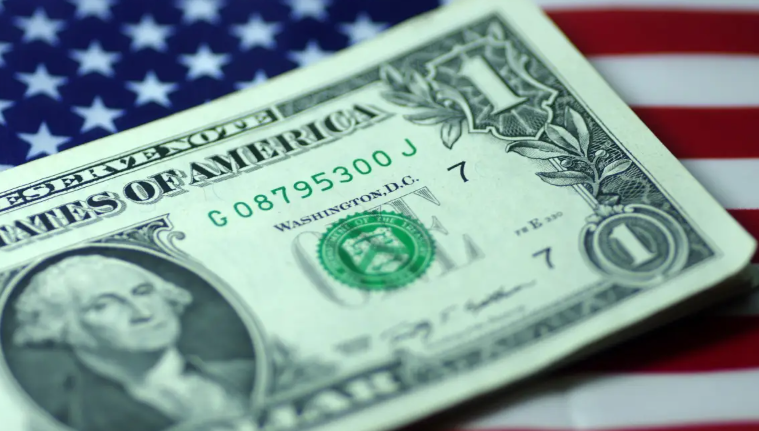Dollar Index Hits 10-Week Low
Advertisements
In the recent discourse surrounding the U.S. economy, Raphael Bostic, President of the Atlanta Federal Reserve, has provided insights that signal a cautious but optimistic outlook for interest rates and the overall financial landscape. During a recent address, Bostic predicted that the Federal Reserve might consider cutting interest rates twice in 2025. However, he tempered this forecast with a note of uncertainty, acknowledging that numerous variables could influence future decisions. This nuanced perspective reflects the challenges facing policymakers as they navigate a complex economic landscape. Currently, the Federal Reserve's benchmark interest rate is situated between 4.25% and 4.5%, with Bostic characterizing this level as moderately restrictive. He emphasized that the central bank still holds the capability to lower rates without reaching what is termed the 'neutral level,' a theoretical point understood to lie between 3% and 3.5%.
Bostic's view lends support to the series of interest rate cuts enacted by the Federal Reserve last year. These moves were largely prompted by a noticeable decline in inflation rates from their 2022 highs. His stance advocates for a less restrictive policy approach to safeguard the employment sector, which currently shows a healthy trajectory with robust job growth and rising real wages. However, he alludes to the growing challenges faced by job seekers, noting an increase in difficulty for unemployed individuals looking to re-enter the workforce, along with a decline in voluntary resignations. This dichotomy presents a complex picture of the labor market, one that strikes a balance between optimism and caution.
Adding to the narrative, recent data from the U.S. Labor Department has indicated a slight uptick in the number of initial jobless claims, suggesting that the labor market still exhibits resilience. For the week ending February 15, the number of Americans filing for unemployment benefits rose by 5,000 to reach a total of 219,000, slightly higher than the market forecast of 215,000. Meanwhile, the continuing claims figure rose to 1.869 million, aligning closely with predictions and underscoring a stable employment environment when compared to pre-pandemic levels. This trend reinforces the Federal Reserve's position of maintaining current interest rates until inflation shows signs of sustained recovery.

Economic analysts have mixed responses to these developments. Sung Won Sohn, a finance and economics professor at Loyola Marymount University, pointed out that the federal government’s hiring slowdowns could signal budgetary constraints, leading to a consequent deceleration in private sector hiring, especially among those industries heavily reliant on federal contracts. Policymakers are now closely monitoring the effects of government fiscal, trade, and immigration policies on the broader economic framework.
In a further analysis of global markets, eyes are turned towards critical data releases that could impact economic forecasts significantly. For instance, upcoming reports on the adjusted retail sales in the U.K. for January, the preliminary S&P Global Manufacturing PMI for the Eurozone in February, and various confidence indexes in the U.S. are all vital indicators for economists and investors alike. Key data including Canada's retail sales figures for December and the finalized University of Michigan consumer sentiment index for February also paint a broader picture of consumer behavior and economic health.
Amidst these macroeconomic discussions, the U.S. dollar index has displayed notable volatility, experiencing a significant pullback. After reaching a peak, the dollar index fell below the critical 107.00 mark, settling around 106.50. Analysts have highlighted profit-taking behavior as a primary driver for this decline; as the dollar had previously accumulated substantial gains, the subsequent sell-off presented downward pressure on its value. Moreover, the release of disappointing economic data further undermined market confidence in the dollar, compounding its downward trend. The breakdown beneath the 107.00 support threshold attracted additional technical selling pressures, exacerbating the dollar's slide.
In contrast, the euro demonstrated a robust performance, surging against the dollar as it tested the 1.0500 level, reaching a three-day high near 1.0490. The rebound was supported by technical buying near the 1.0400 mark as well as the eurozone’s relatively strong economic data. The selling pressure on the dollar provided additional support for the euro, highlighting a certain resilience in the European economy. As traders remain watchful, immediate resistance is eyed around 1.0600, while crucial support is seen at the 1.0400 level.
Similarly, the British pound demonstrated positive momentum, achieving a nine-week high with trading near 1.2660. This rally was again facilitated by a combination of robust buying interest near the 1.2600 level, paired with the dollar's inefficacy due to soft economic readings that exerted pressure on its value. Support from strong U.K. economic data also contributed to the favorable shifts in the pound's value. Traders are now directing their focus toward the next resistance point around 1.2750, with underlying support identified at 1.2550.
The unfolding narrative of the U.S. economy and global markets involves a confluence of factors that policymakers must navigate carefully. The potential for interest rate reductions, fluctuations in employment data, and the persistent tug-of-war between economic indicators reveal a landscape that is both intricate and dynamic. As the Federal Reserve assesses these developments, its ability to adapt to the ongoing economic winds will be critical in shaping the future trajectory of rates and the broader financial terrain.
Leave a Reply